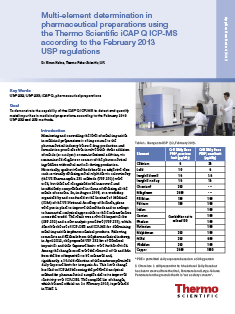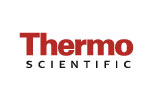Knowledge Base

View0
- IRMS
- Delta XP
- TC/EA
- 2H and 18O
- View
- Add to Favorites
- Send Link
- Private
Validation of deuterium and oxygen18 in urine and saliva samples from children using on-line continuous-flow isotope ratio mass spectrometry
H. Schierbeek (1), R. Rieken (2,3), K. Y. Dorst (1), C. Penning (2), J. B. van Goudoever (1)
1) Erasmus Medical Center – Sophia Children's Hospital, Department of Paediatrics, Division of Neonatology, PO Box 2040, 3000 CA Rotterdam, The Netherlands, 2) Intellectual Disability Medicine, Department of General Practice, Erasmus MC, Rotterdam, The Netherlands, 3) Department of Paediatric Surgery, Erasmus MC – Sophia, Rotterdam, The Netherlands
Rapid Communications in Mass Spectrometry (2009), V23 (22), pp3549–3554, doi: 10.1002/rcm.4279
Goal: The doubly labelled water method is valuable for measuring energy expenditure in humans. It usually involves blood or urine sampling, which might be difficult in neonates and children with cerebral palsy or other disabilities. We therefore aimed to validate a method making use of saliva samples analyzed by automated thermal conversion elemental analyzer in combination with isotope ratio mass spectrometry (TC-EA/IRMS). The subjects received labelled water orally and urine and saliva samples were collected and analyzed. Deuterium as well as oxygen18 was measured in one single run using a peak jump method. Excellent linearity was found for measurement of enrichments of deuterium (R2 = 0.9999) and oxygen18 (R2 = 0.9999).

View0
- IRMS
- MAT252
- Dual Inlet
- 13C and 18O
- View
- Add to Favorites
- Send Link
- Private
Calcite-CO2 mixed into CO2-free air: a new CO2-in-air stable isotope reference material for the VPDB scale
Prosenjit Ghosh, Michael Patecki, Michael Rothe and Willi A. Brand
Max Planck Institute for Biogeochemistry, P.O. Box 100164, 07701 Jena, Germany
Rapid Communications in Mass Spectrometry (2005), V19, pp1097–1119, doi: 10.1002/rcm.1886
Goal: In order to generate a reliable and long-lasting stable isotope ratio standard for CO2 in samples of clean air, CO2 is liberated from well-characterized carbonate material and mixed with CO2-free air. For this purpose a dedicated acid reaction and air mixing system (ARAMIS) was designed. In the system, CO2 is generated by a conventional acid digestion of powdered carbonate. Evolved CO2 gas is mixed and equilibrated with a prefabricated gas comprised of N2, O2, Ar, and N2O at close to ambient air concentrations. Distribution into glass flasks is made stepwise in a highly controlled fashion. The isotopic composition, established on automated extraction/measurement systems, varied within very small margins of error appropriate for high-precision air-CO2 work (about 0.015 permil for d13C and 0.025 permil for d18O).

View0
- IRMS
- Delta E
- PreCon
- 15N and 18O
- View
- Add to Favorites
- Send Link
- Private
Nitrogen and triple oxygen isotopes in near-road air samples using chemical conversion and thermal decomposition
Anna Smirnoff (1), Martine M. Savard (1), Robert Vet (2) and Marie-Christine Simard (1)
1) Natural Resources Canada, Earth Sciences Sector, 490, de la Couronne, Québec (QC), Canada, G1K 9A9, 2) Environment Canada, Air Quality Research Division, 4905 Dufferin Street, Toronto (ON), Canada, M3H 5T4
Rapid Communications in Mass Spectrometry (2012), V26, pp2791–2804, doi: 10.1002/rcm.6406
Goal: The determination of triple oxygen (d18O and d17O) and nitrogen isotopes (d15N) is important when investigating the sources and atmospheric paths of nitrate and nitrite. To fully understand the atmospheric contribution into the terrestrial nitrogen cycle, it is crucial to determine the d15N values of oxidised and reduced nitrogen species in precipitation and dry deposition. In an attempt to further develop non-bioticmethods and avoid expensivemodifications of the gas-equilibration system, we have combined and modified sample preparation procedures and analytical setups used by other researchers. We first chemically converted NO3 – and NH4+ into NO2 – and then into N2O. Subsequently, the resulting gas was decomposed into N2 and O2 and analyzed by isotope ratio mass spectrometry (IRMS) using a pre-concentration system equipped with a gold reduction furnace.

View1
- View
- Add to Favorites
- Send Link
- Private
Thermo Scientific Delta Ray CO2 Isotope Ratio Infrared Spectrometer with URI Connect
Thermo Fisher Scientific, Bremen, Germany
BR30308

View0
- View
- Add to Favorites
- Send Link
- Private
Thermo Scientific Delta Ray Isotope Ratio Infrared Spectrometer
Thermo Fisher Scientific, Bremen, Germany
BR30278

View1
- IRIS
- Delta Ray
- Carbon Isotopes
- Dissolved Organic Matter
- Marine Sediments
- View
- Add to Favorites
- Send Link
- Private
Determination of Carbon Isotope Ratios (δ13C) of Dissolved Inorganic Carbon (DIC) in Marine Sediment Pore Water Using the Delta Ray IRIS with URI Connect
Marcus Elvert (1), Tim Stoltmann (1), Heidi Taubner (1), Nils Stöbener (2), Eric Wapelhorst (2), H.J. Jost (1) and Magda Mandic (1)
1) MARUM, University of Bremen, Germany, 2) Thermo Fisher Scientifc, Bremen, Germany
AN30335
Goal: The goal of this study is to demonstrate the performance of Delta Ray IRIS with URI Connect for the isotopic analysis of Dissolved Inorganic Carbon (DIC)

View0
- IRIS
- Delta Ray
- CO2 Monitoring
- C and O isotopes
- View
- Add to Favorites
- Send Link
- Private
Monitoring of Rapid Changes in the Concentration and Isotopic Composition of CO2 with the Thermo Scientific Delta Ray IRIS
Magda Mandic and HJ Jost
Thermo Fisher Scientific, Bremen, Germany
AN30326
Goal: The goal of this study is to demonstrate the fast time response of the Delta Ray IRIS by a monitoring experiment performed in a conference room (volume cca. 75 m3) during a two-day meeting attended by up to 35 people. Concentration as well as isotopic composition of the CO2 were monitored.

View1
- IRIS
- Delta Ray
- CO2 Exchange
- Terrestrial Ecosystem
- C and O isotopes
- View
- Add to Favorites
- Send Link
- Private
Monitoring of Plant CO2 Exchange Within Terrestrial Ecosystems
H.J. Jost (1), Eric Wapelhorst (1), Magda Mandic (1), Nils Stoebener (1), Ulf Froehlich (1), Laura Gangi (2), Roland Bol (2) and Nicolas Brüggemann (2)
1) Thermo Fisher Scientific, Bremen, Germany, 2) Forschungszentrum Jülich GmbH, Institute of Bio- and Geosciences - Agrosphere (IBG-3), Jülich, Germany
AN30291
Goal: The goal of this study is to observe rapid changes in plant metabolism by simultaneously monitoring carbon and oxygen isotope ratios of carbon dioxide under varying ambient conditions in a plant chamber. To accurately estimate the CO2 fluxes in terrestrial ecosystems.

View4
- IRMS: EA IsoLink
- Elemental Analysis
- Helium consumption
- View
- Add to Favorites
- Send Link
- Private
EA-IRMS: very low helium consumption on the EA IsoLink IRMS System
Christopher Brodie and Oliver Kracht
Thermo Fisher Scientific, Bremen, Germany
TN30380
Goal: The goal of this study is to describe the Helium Management (HeM) Module of the Thermo Scientific™ EA IsoLink™ IRMS System and demonstrate the helium savings achieved during analysis and stand-by modes.

View3
- IRMS: EA IsoLink
- O isotopes
- Nitrogen-rich samples
- View
- Add to Favorites
- Send Link
- Private
EA-IRMS: Accurate and Precise Weight% O and δ18O Analysis of Nitrogen-rich Samples using the EA IsoLink IRMS System
Christopher Brodie, Oliver Kracht and Charles Douthitt
Thermo Fisher Scientific, Bremen, Germany
AN30374
Goal: The goal of this study is to demonstrate high precision weight% O and δ18O analysis on nitrogen-rich sample matrices with complete N2 and CO peak separation using continuous flow gas chromatography.

View3
- IRMS: EA IsoLink
- NCS analysis
- View
- Add to Favorites
- Send Link
- Private
EA–IRMS: Simultaneous NCS Isotope Analysis
Christopher Brodie, Oliver Kracht and Alexander Hartwig
Thermo Fisher Scientific, Bremen, Germany
AB30366
Goal: The goal of this study is to demonstrate simultaneous NCS analysis on the Thermo Scientific™ EA IsoLink™ IRMS System.

View5
- IRMS: EA IsoLink
- Sulfur Isotopes
- IAEA standards
- View
- Add to Favorites
- Send Link
- Private
EA-IRMS: No Intra-sample Memory for δ34S Measurements of Inorganic Sulfur Materials Using the EA IsoLink IRMS System
Christopher Brodie, Oliver Kracht, Alexander Hartwig, Andreas Hilkert and Charles Douthitt
Thermo Fisher Scientific, Bremen, Germany
AB30357
Goal: The goal of this study is to demonstrate that the EA IsoLink IRMS System is free from intra-sample memory for δ34S measurements by using inorganic international reference materials.

View5
- IRMS: EA IsoLink
- Wood
- C, N, S isotopes
- View
- Add to Favorites
- Send Link
- Private
EA-IRMS: Simultaneous δ13C, δ15N, and δ34S Analysis of Wood with the EA IsoLink IRMS System
Christopher Brodie, Oliver Kracht, Alexander Hartwig, Andreas Hilkert and Charles Douthitt
Thermo Fisher Scientific, Bremen, Germany
AB30356
Goal: The goal of this study is to demonstrate simultaneous NCS analysis on wood samples, with a C/S ratio > 7000:1, using the EA IsoLink IRMS System.

View1
- View
- Add to Favorites
- Send Link
- Private
Smart Note EA IsoLink Helium Management
Thermo Fisher Scientific, Bremen, Germany
SN30376

View1
- View
- Add to Favorites
- Send Link
- Private

